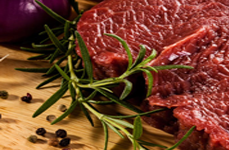When it comes to vitamin and mineral deficiencies, it can feel a lot like a “who’s who” popularity contest. You hear about the essential vitamins like vitamin D, calcium, magnesium and maybe even vitamin C, plus what to do to boost your levels and get back on track. But like a good dramatic film, there are also underdogs worth rooting for. In this case, potassium is our underdog, and it’s important that you learn about potassium and the signs of low potassium levels.
What is Potassium?
According to the U.S. National Library of Medicine, potassium is critical to your body’s normal everyday functioning. It is a type of electrolyte that “helps your nerves to function and muscles to contract. It helps your heartbeat stay regular. It also helps move nutrients into cells and waste products out of cells. A diet rich in potassium helps to offset some of sodium's harmful effects on blood pressure.”
The recommended daily intake for potassium is 4,700 mg per day, which may sound like a lot, but considering how many potassium-rich foods are readily available, hitting that mark on a consistent basis isn’t much of a challenge. That said, it is possible to eat all the right high potassium foods and still have low potassium levels.
What is Potassium Deficiency & What Causes Low Potassium Levels?
The Mayo Clinic defines potassium deficiency (hypokalemia) as “a lower than normal potassium level in your bloodstream. Normally, your blood potassium level is 3.6 to 5.2 millimoles per liter (mmol/L).”
Mayo states the most common cause of low potassium levels or potassium deficiency is a result of certain prescription medications that increase urination. Water pills and diuretics prescribed for certain blood and heart health issues are a common culprit. Vomiting and diarrhea can result in excessive potassium loss from the digestive tract as well.
One overlooked cause of lower potassium levels is excessive sodium intake. The more sodium you eat, the more potassium your body excretes.2 Given our sodium-rich Standard American Diet (SAD), this might be a more prevalent problem than we care to admit. What are the other signs of low potassium to look for? Let’s take a closer look.
Potassium Needs & Tired, Crampy Muscles
Every cell in your body requires potassium to function properly, so one of the first — albeit somewhat vague — potassium deficiency symptoms is general fatigue. If you know you’re getting enough sleep, eating a healthy diet and exercising regularly but still find yourself exhausted throughout the day, you could be experiencing the effects of low potassium levels.
Weakness, a variation of fatigue, is another sign of potassium deficiency, as are muscle spasms and muscle cramps. Potassium plays a role in smooth muscle contraction, so when levels are low, you might see an increase in cramps, especially during exercise (as an electrolyte, you lose a lot of potassium through sweat). If you can’t figure out any other culprit to your fatigue, check your diet first and make some adjustments, then consult with your doctor if you don’t notice any changes.
Uneasy Gut (& Poor Diet) & Potassium Deficiency
There are hundreds of reasons why your stomach might be upset on any given day... or why you’re suddenly feeling a bit bloated, cramped or constipated. Low potassium levels have a way of slowing down your body’s natural rhythms and processes (like muscle performance), and your digestive system is susceptible to those same slowdowns.
Look at your plate the next time you sit down for a meal. What do you see? Any bursts of color, or just bland shades of “meat and potatoes”? Any of these potassium deficiency symptoms can often be traced back to poor dietary choices. If you’re a typical American eating mostly out of a bag or a box, chances are good you’re not meeting your daily potassium requirements, and it’s time to add in some fresh fruits and vegetables to your regular routine.
Potassium Needs & Heart Health
Here’s the big one. The Mayo Clinic clearly warns that very low potassium levels can affect heart health. If you have any heart or cardiovascular health concerns, it’s best to call your doctor and get checked right away.
Changes in cardiovascular health may be linked to potassium levels, and as Prevention.com notes, “many things — including your family history, being overweight, and eating too much salt — can cause your pressure to soar. Potassium matters because it helps offset sodium. Many people eat too many salty foods and not nearly enough fruits and vegetables, which throws the balance off and contributes to [changes in blood pressure].”3
Foods High in Potassium
The good news is it’s easy to boost your potassium intake with just a few simple changes to your regular diet. The usual suspects like leafy greens, fresh fruits and root vegetables are all foods rich in potassium. If you ever had a coach tell you to eat more bananas, it’s because bananas are loaded with potassium and can help with muscle performance. Yet, you’ve got more options than just bananas. Foods high in potassium include:
• Leafy greens like spinach and collards
• Fruit from vines like grapes and blackberries
• Root vegetables like carrots and potatoes
• Citrus fruits like oranges and grapefruit
You can also help meet your daily potassium recommendations by adding potassium supplements to your daily routine.























LEAVE A COMMENT :
Comments sort : Newest / Oldest / Most Upvoted